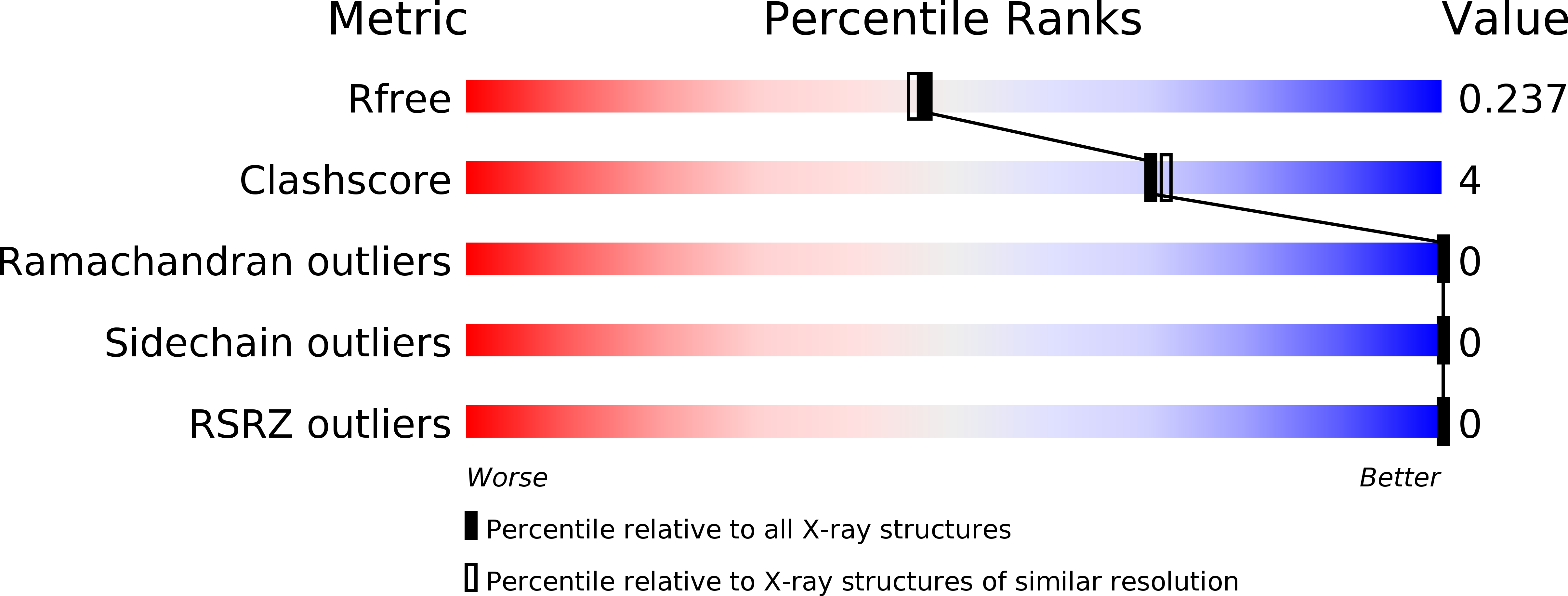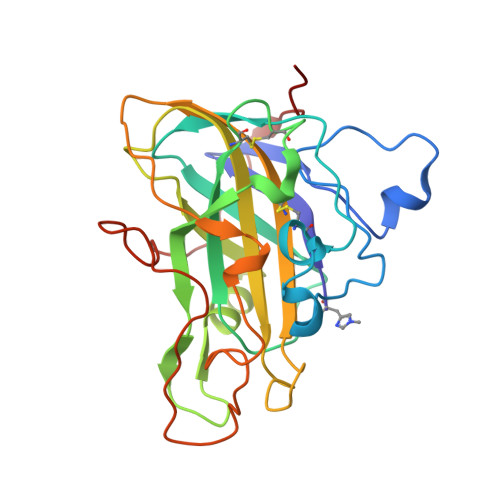High-resolution structure of a lytic polysaccharide monooxygenase from Hypocrea jecorina reveals a predicted linker as an integral part of the catalytic domain.
Hansson, H., Karkehabadi, S., Mikkelsen, N., Douglas, N.R., Kim, S., Lam, A., Kaper, T., Kelemen, B., Meier, K.K., Jones, S.M., Solomon, E.I., Sandgren, M.(2017) J Biol Chem 292: 19099-19109
- PubMed: 28900033
- DOI: https://doi.org/10.1074/jbc.M117.799767
- Primary Citation of Related Structures:
5O2W, 5O2X - PubMed Abstract:
For decades, the enzymes of the fungus Hypocrea jecorina have served as a model system for the breakdown of cellulose. Three-dimensional structures for almost all H. jecorina cellulose-degrading enzymes are available, except for Hj LPMO9A, belonging to the AA9 family of lytic polysaccharide monooxygenases (LPMOs). These enzymes enhance the hydrolytic activity of cellulases and are essential for cost-efficient conversion of lignocellulosic biomass. Here, using structural and spectroscopic analyses, we found that native Hj LPMO9A contains a catalytic domain and a family-1 carbohydrate-binding module (CBM1) connected via a linker sequence. A C terminally truncated variant of Hj LPMO9A containing 21 residues of the predicted linker was expressed at levels sufficient for analysis. Here, using structural, spectroscopic, and biochemical analyses, we found that this truncated variant exhibited reduced binding to and activity on cellulose compared with the full-length enzyme. Importantly, a 0.95-Å resolution X-ray structure of truncated Hj LPMO9A revealed that the linker forms an integral part of the catalytic domain structure, covering a hydrophobic patch on the catalytic AA9 module. We noted that the oxidized catalytic center contains a Cu(II) coordinated by two His ligands, one of which has a His-brace in which the His-1 terminal amine group also coordinates to a copper. The final equatorial position of the Cu(II) is occupied by a water-derived ligand. The spectroscopic characteristics of the truncated variant were not measurably different from those of full-length Hj LPMO9A, indicating that the presence of the CBM1 module increases the affinity of Hj LPMO9A for cellulose binding, but does not affect the active site.
Organizational Affiliation:
From the Department of Chemistry and Biotechnology, Swedish University of Agricultural Sciences, P.O. Box 7015, SE-750 07 Uppsala, Sweden.



















